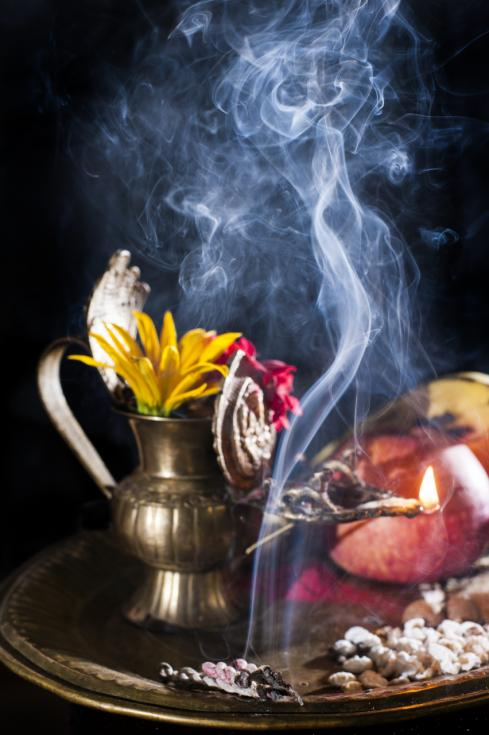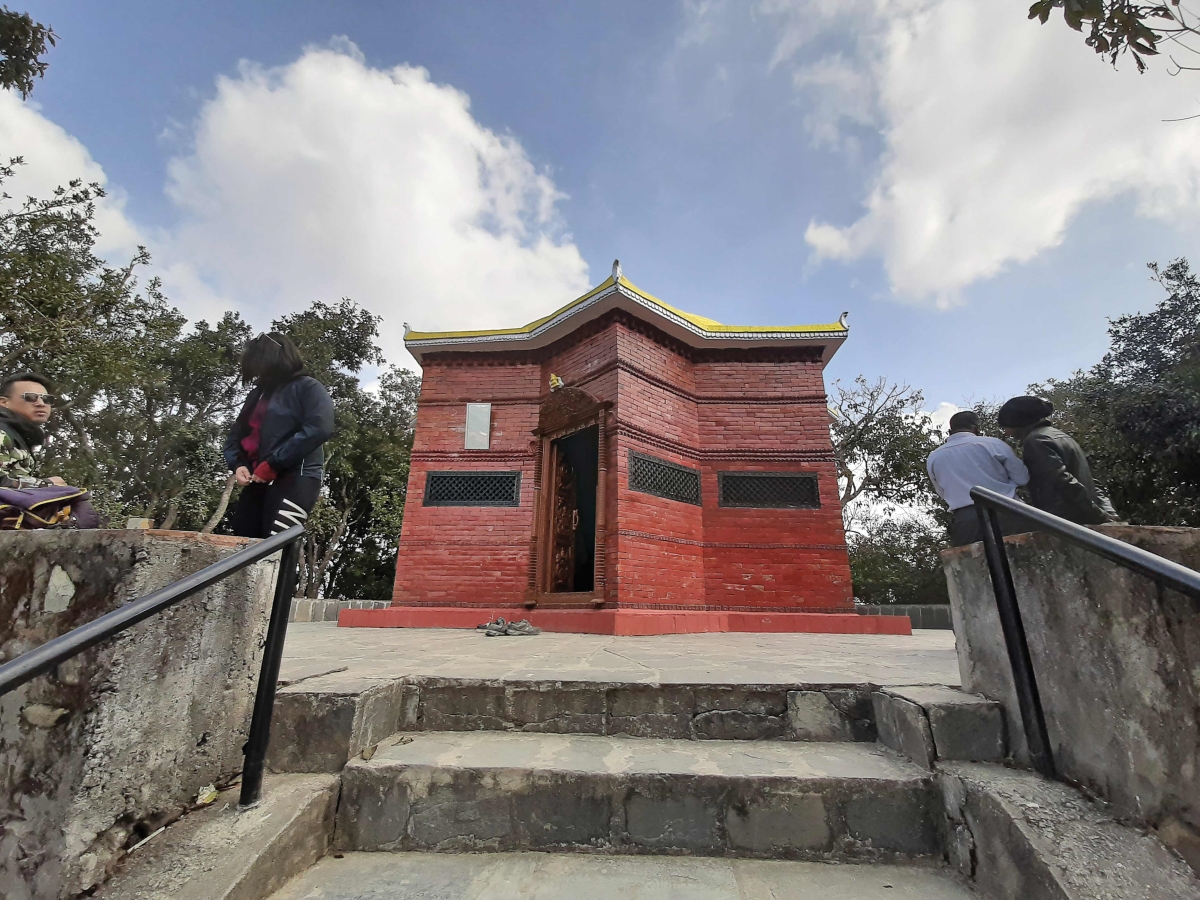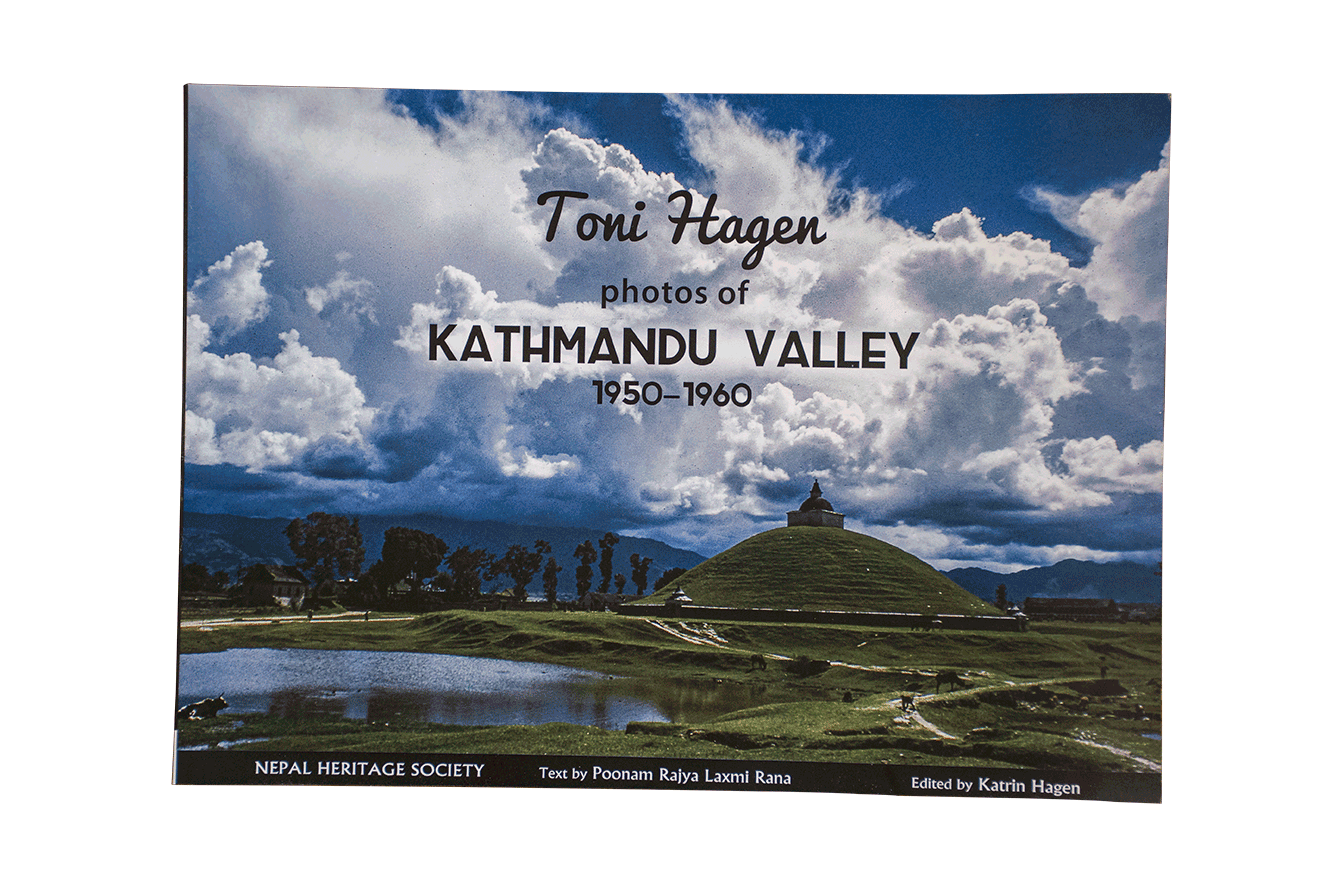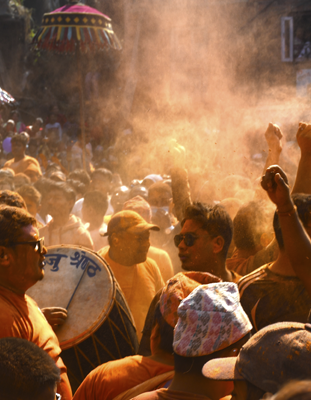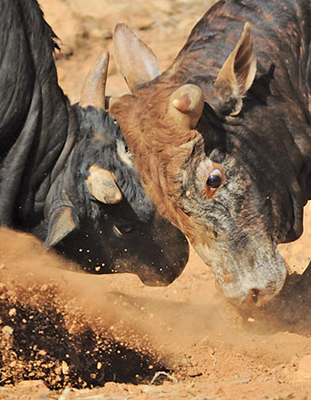Rightly titled Amalgam, the group exhibition which took place at Siddhartha Art Gallery in Baber Mahal (June 27- July 28) displays the works of 25 artists from different backgrounds expressing on canvas and other mediums, diverse topics of aesthetics, personal fancy, commemoration, self realizations and mostly social and political awareness.
The contemporary visual arts of Nepal has taken a big step forward and are very much in the flow with the global art practices. Most artists of today use their creative genius to express a social message and create awareness about various topics that need immediate attention. Thus art has moved from being admired only for their aesthetical beauty to being admired for their role in bringing about a social awareness.
Short briefs from the artists about their work at Amalgam, follow.
Prithivi Shrestha
Transforming
Shrestha aims to convey a socio-cultural message to all, about the very mechanical life we are living, where technology has overpowered all our senses and we have it flowing in our every nerve. The only link we have with our culture and roots is the surroundings depicted here by the decorative niche, the various heritages of our culture that is being forgotten as interacting on social media takes up all of our time and energy.
Mukesh Shrestha
Liberty
The closed eyes of the Statue of Liberty is explained by the artist as a feeling of helplessness felt by the statue who herself is a symbol of independence. The violence, wars and natural disasters that are taking lives of people by hundreds and the chaos and confusion it creates makes the statue remember The Buddha, who with his message of peace and non-violence, won many hearts.
Subas Tamang
Muhar ek Parda
This work of art is an expression of self experience and self realization. “Veils are used to hide something,” he expresses and different situations and circumstances make us put on different veils. These veils cause us to act differently from our actual self. The numerous self portraits with veils shown in the painting are all his personal experiences.
 Jashmine Rajbhandari
Jashmine Rajbhandari
Ramailo
The very essence of the title is clearly visible in this painting. Rajbhandari portrays the “ramailo” phase of life she is going through and shares her personal experiences on the canvas. The figures otherwise captivated in tudals or struts seem to be flying free and the contrast in colors of the red background and dark brown of the wood all fit together to reflect the beautiful chapter of the artist’s life.
Hit Man Gurung
The Blank Frame
The title is used as a metaphor to express the feeling of loss and grief at the loss of lives and disability of so many migrant workers of Nepal who travel to foreign lands in search of better job opportunities but sometimes return back handicapped and sometimes in wooden boxes or coffins. This series of five paintings depict the true story of a migrant worker who became handicapped due to stress and overwork and completely lost his memory. The background of the central canvas is filled with pictures of the numerous migrant workers of Nepal, presented here as fading away from the memory of the subject.
Saurganga Darshandhari
Frolic
This beautiful piece of art which is an Etching Aquatint has deeper meaning than meets the eye. Dharshandhari talks about the purusha and prakriti or the male and female, the union of which leads to creation. The composition of the tie and the hair is also a synonym of the male and female of the contemporary world. The bar and pipul trees are other examples of the male and female. She stresses on the role of the purusha and prakriti for the continuation of life.
Mekh Limbu
Buwa…I wishi I could see you (Triptych)
This work of art relates a story of a girl who is now almost 18 years of age but has seen her father only a couple of times in her life. Her father is a migrant worker in Malaysia. Although he provides for her every need, the most needed things in any relation, the feelings, the love, the attachment and intimacy are missing. Limbu who hails from, a town that has high migration rates, is concerned about the imbalance and lack of attachment and the gap that is present between family members.
Sunil Sigdel
Me & my grandmother
Sigdel has painted this artwork in remembrance of his grandmother, who he lost a year ago. He has in fact merged two faces – that of himself and his grandmother in this painting. Attachment is something that stays on; it follows us till we let it follow. The conversations and legends, folklore and religious stories narrated by his grandmother stays with him as indispensable reminiscences.
Surendra Maharjan
Hibernation
Limitation is something that is a need in every action or emotion. When we lose our sense of limits it creates a lot of problems. Maharjan relates to the sexual desires of man which when out of control leads to degeneration of his mind depicted in his work by the outgrowth of mushrooms. He also compares extreme levels of sexual desires as a sedative that tranquilizes the mind and leads him away from fulfilling his responsibilities.
Luvakant Chaudhary
Innocent Rice Winners (Triptych)
This triptych focuses on the topic of child labor and intends to raise a voice against it. Inspired by the child near his educational institution who often served him tea, he conceptualized this artwork. The highlight is on the hands of a child, who is shown performing all kinds of tasks like preparing and serving tea, repairing a tyre, and making pottery.

Sheelasha Rajbhandari
Eternal Thirst
The life size healthy human figure, reclining in a comfortable position with a funnel attached to the neck instead of the head is an installation art that talks about many issues of our lifestyle. Rajbhandari stresses on the fact that the wants and desires of humans are never quenched, they keep increasing thus she uses the funnel that just takes in everything that is put into it. The body is covered with a collage of x-rays cut into small pieces to fit as a dress worn by the figure.
 Shraddha Shrestha
Shraddha Shrestha
Town Tripping
This graphic description of Kathmandu is the creation of Shrestha’s love for collages and pasting magazine cuttings on top of each other. She also refers to Kathmandu as a bottled up city where people live comfortably in their nests and refuse to move out and open their horizons. She compares the clustered urban expansion that is illustrated in the collage to the confined thinking of the locals here.
Arjun Bhandari
Self- Portrait
People aim to make a good life for themselves. Life is a continuous learning and experiencing process.
Through our experiences we grow and mature. Through the micro view, depicted as colorful screens, Bhandari familiarizes himself with all the realities of life and sees through it, the beautiful life he wishes to make for himself.
Sudeep Balla
Beatles 9-11
Balla started research on the theme of songs, on which and what music or song was people’s favorite. On the basis of his research he realized that The Beatles was a band that is ageless.
Everybody is attracted by their beats. ‘Let it be’ is one number that plays in everybody’s mind. Thus he has placed it on a cloud. The other event that is remembered by all is the horrific event of 9-11, which Balla correlates to end violence and spread the message of love and peace.
Prabin Shrestha
This Clock has a Story of Own Pain
The current situation of Nepal in the sector of education is well depicted in this painting by Shrestha. Having completed his MFA from Central Department of Fine Arts, TU, Kirtipur from where he had a good view of the Humanities building with the clock tower he painted just what he saw for two years…the stopped clock , like he puts, relates to the current situation of the education system of Nepal. The grazing cattle in the university premises is, according to him, a situation of the future, if state of affairs continue like at present.
Kailash Shrestha
Abhibadan Kamred
Shrestha uses his artwork as a satire to the political situation of Nepal. The various development plans have been halted due to unstable political situations and misuse of power. And, the innocent citizens are at the suffering end. This artwork is a part of a series of other works on the same topic of socio-political awareness. He stresses that the political situation is very much like the figures in this work, tussling for power.
Sanjeev Maharjan
From the series of “Intimate Immediate”
Eleven watercolor paintings depict Maharjan’s recent visit to Marpha on a three-week art residency program. He was touched by the children working at the hotels and lodges at Marpha. These children from villages outside Marpha are adpoted by the Thakali families at Marpha. They are sent to schools and given food and clothing but are burdened with domestic chores. All characters shown are people in real life and Maharjan has painted them from his memory, in their remembrance.
Aditya Aryal
Ying Yang Geometry
The very images of The Buddha and the Lion placed together reflect something of contrast just like the title ‘Ying Yang Geometry’ or the Chinese philosophy that says that every bright side has a dark spot and every dark side has a bright spot. The usage of geometric shapes to create a form is a unique style of the artist, depicting the two extreme personalities of most human beings.
Arjun Khaling
Maize and Chilli
Khaling skillfully captures the essence of urban life of the recent migrants of Kathmandu. Earning or accumulating money to buy land, just enough to build a comfortable house, they miss the rural lifestyle with vast plots of land, green vegetation and pasture land and so, to fulfill their desires they practise terrace gardening. Colorful pots are used to bring out their feeling of urbanization in which seasonal vegetables are grown to connect them to their roots.

Narayan Bohaju
The Story of Water
This work is a part of a series of other works on the same topic of water. Bohaju felt disturbed by the queues of water-pots, and various containers of various shapes and sizes all lined up for water, everywhere he went. The shortage of water is a shortage of our basic need.
Muna Bhadel
De-centralization
This painting raises questions on the centralization of power, facilities, security, jobs, and population in the Kathmandu Valley. Because everything is centralized in the Valley, people travel from far to reach the Valley in search of better opportunities. But what do they find when they come here? Over-population, high competition and inflation-- all of which cause a lot of problems in the society. “Is there no other option?” is the question Bhadel raises against centralization.
Sagar Manandhar
Construction I, II, III
“Construction” is a word we generally relate to the activity of building an architectural structure. According to Manandhar, construction is development. It definitely related to the activity of building but not necessarily an architectural structure only. It can be building a story, a drama, a plan for an event and even building the concept for a work of art. Artist’s paintings are also a construction of representative forms, here of lines, patches of colors, flora and fauna.

Rajan Pant
Saraswoti Puja
The typical celebration of a ritual in the Terai is depicted in this painting. Having visited the Terai often. Pant has a fascination for the colorful picturesque of the region. The very essence of rural and rustic life, with people wearing clothes of various hues, dancing and merry-making with the bullock cart that carries the idol of Goddess Saraswoti, which will be immersed in a river after the celebration of Saraswoti puja is shown in his work. Men, women, children and even animals are all participants of the show.
Ram Maharjan
Gajyang Gujyung
This artwork is an experimentation of color and lines. The artist feels that total mental peace is not achievable while living as a part of society. We are caught up in a web of responsibilities, obligations and duties. Everything around us also gives the same vibes. Hence the strokes of dull colors are an expression of his inner self.
Sushma Shakya
Untitled II
Shakya shares her personal experience of childhood when she visited the bahas of Kathmandu with her parents. Bahas and bahis were places that parents took their little kids out to play. Stories of the mythical animals were related and children enjoyed running around in the recent past. But the recent development of technology has made the new generations its literal slave.


